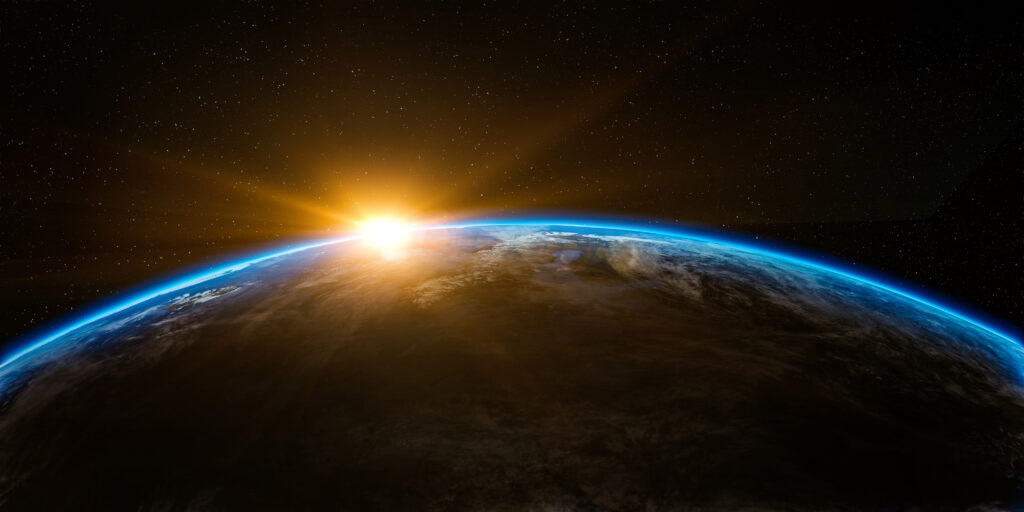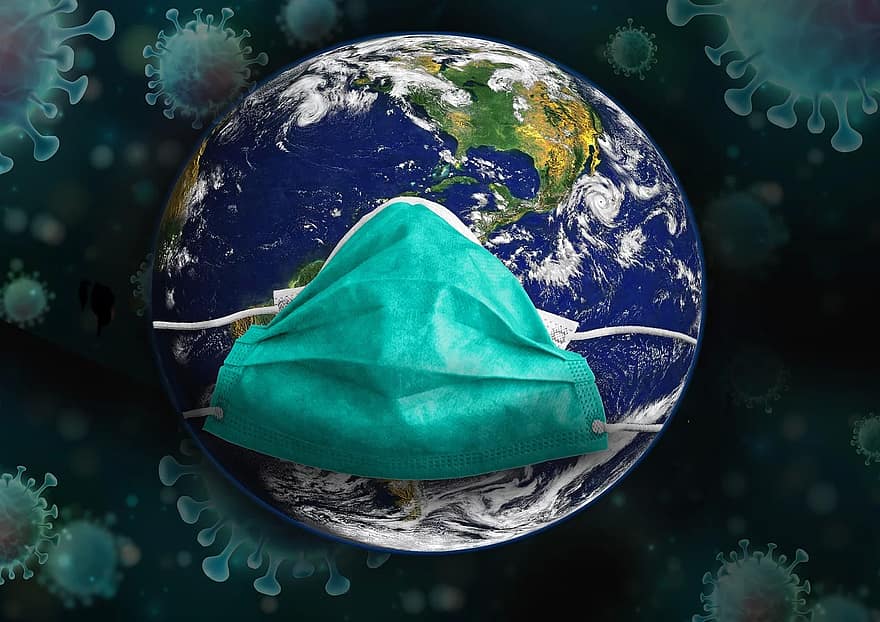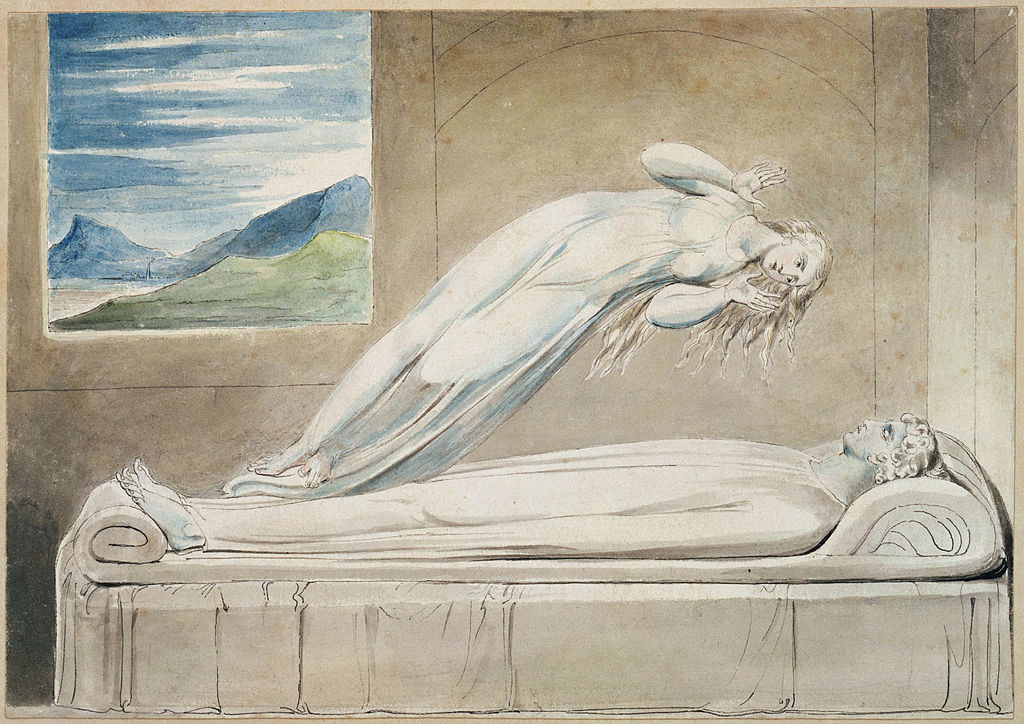AWESOME

- I. The World
- II. The Whole World
- III. Nothing But The World
- IV. Conclusions
- V. Citations
I. The World
The term “worldly” has multiple meanings. I am not worldly like a sophisticated, well-traveled jet-setter. I am earthly, not looking for answers in the heavens. Synonyms would include materialist or monist. Worldly is also a nice stand-in word for “global.” I consider the human domain to be the world, the whole world, and nothing but the world.
II. The Whole World
A. I Identify as Human
Social theories are self-fulfilling. If I believe that I belong to Group A, and that Group B is our enemy, it’s amazing how accurate those predictions become. Xenophobia makes some sense in a long-term evolutionary view. Social processing is one of the most taxing demands on the human brain. Sociologists say that a small community can hold itself together by sheer trust when everyone knows everyone’s relationships with everyone. The upper limit to this group size is only about 150. 1 Any larger than that, and people start to feel that they are living with strangers. There’s a real argument, then, that it is unnatural for people to cohere in groups of 200 or more.
Social cohesion matters most when other groups are competing for limited resources like land, water, and food. When two groups encounter each other, they have many options. They can try destroying or dominating each other. They can agree to a boundary. They can cooperate and trade. Sometimes they even merge.
A merger of smaller groups into a larger one has many advantages. We give these advantages fancy names like economy of scale, division of labor, standards, and synergy. One large group can live more efficiently than two smaller groups. The benefits are so great that people have been merging for 10,000 years, even though they surpassed the “natural” group size as soon as they started to do so. Large groups found it so important to hold together that they invented new institutions for cohesion: organized religion, law, morality, and group identity.
Cohesive groups grew to the size of chiefdoms, then civilizations and nations, now up to the gigaperson scale. Some group identities are more informal and nebulous. Religions, languages, cultures, and social networks all have their own group identities. We have to train ourselves to identify with a large group beyond our immediate circle, but we have shown an essentially infinite capacity for doing so.
The final step is obvious, but it seems that, the closer we get to it, the more resistance it faces. That step is global identity. Is it possible to say, “I identify as human”? I believe that we can and should. The secret to world peace could be something as intangible as this attitude. It is a relatively new concept, but it is happening incrementally. As I write this in 2020 amidst the corona virus pandemic, at least I am heartened to see people of all nations feel each other’s pain. Sometimes it takes a common enemy to bring us together.

B. World Government?
The pushback against globalism is especially fierce when it comes to government. We accept government at every level, from the school board to the nation, but something about world governance sends many people into a wide-eyed panic. Nationalists associate “global” with “foreign”, apparently forgetting that their nation, too, is part of the globe.
“We must not become global!” posts the nationalist to a social network he shares with a billion people around the world. Let’s face it, national isolation is impossible. Culture and the economy are globalizing at break-neck speed. Many people still deny this, and the institutions to manage this integration of 8 billion people lag far behind. Without rules in place, you can be sure that the benefits will be reaped by a few and the burdens borne by many.
Several geopolitical functions seem more naturally suited to one global government than 200 national ones. To name more than a few: protecting the oceans and atmosphere, phasing out dictators, taxing corporations and billionaires with multi-national assets, settling refugees, preventing and responding to pandemics, mitigating global financial crises, policing the internet and international crimes, facilitating global freedom of movement, establishing global intellectual property rights, protecting international investments in poor regions, overseeing weapons of mass destruction, mediating border disputes, exploring outer space, managing the transition to post-fossil-fuel energy sources … .
Of course, the transition to globalism raises legitimate concerns. Like any unification, it will involve compromises and transfer of wealth. In the short-term, it is downright painful for many people. The UN is the closest thing we have to a world government, but that’s not really what it was designed for, and it has serious flaws as a governing body. It would be exciting to see the UN gradually reformed into a Global Federation of Republics (GFR).
But rarely have I seen dispassionate opposition to globalism based on well-considered principles. Just this week, I saw a tweet by Bill Gates offering his support for the World Health Organization. 1 I didn’t see one single supportive reply. The commenters were rabid. They hurled “Globalist!” at him like an invective. They accused him of one conspiracy theory after another. There is a truly deep-seated irrational fear in the hearts of anti-globalists. What are they so afraid of?
I believe that this fear derives from false historic parallels and even mythology. Historically, large central governments have been empires formed by conquest under a king. There is a widespread lingering assumption that global unification will have to come about the same way: one of the superpowers will destroy the others, erase all national boundaries, and crown a malevolent global dictator. Some Christians even believe that the bible prophesies such an “antichrist” tyrant. 2 Globalism also gets conflated horribly with Marxism. Marx and Engels did call for the “workers of the world” to unite, but this was because they recognized the capitalist upper class as already global.
I don’t know about you, but I am not comfortable basing 3rd-millennium geopolitical decisions on 1st-millennium prophecies. Globalism does not have to culminate in an evil empire or a socialist revolution. It’s something we are already forging ourselves as a grassroots effort. Again, the viability of a system like a GFR depends on attitude and resolve. Right now, there is so much emotional resistance to the idea of world government that it would not have the consent of the governed. But I think it’s inevitably on the horizon. If we don’t want world government planned out by a cabal of billionaires, maybe we should beat them to it and start discussing it among ourselves first.
III. Nothing But The World
- A. Spirituality, Monism, and Dualism
- B. The Material Brain vs. Embodied Spirits
- C. Disembodied Spirits
A. Spirituality, Monism, and Dualism
People of earlier times matter-of-factly assumed a dualist universe, in which our natural world is controlled by a supernatural, celestial, spirit world. The modern monist view finds that there is only one world: our self-contained material realm.
The primary difference between these worldviews is the nature of spirits. Spirits can be embodied or disembodied. I have addressed the issue of disembodied spirits, such as God, to some extent in my essay, “A is for Atheism / Agnosticism.” This essay will emphasize the question of the embodied spirit, the mind / brain / body connection.
B. The Material Brain vs. Embodied Spirits
More than likely, nobody will ever quite understand how the brain makes the mind. However, monists and dualists must both state a case. Do we have a general sense of what’s going on in there? What’s our evidence?
The dualist position is inferred by drawing comparisons between a living person and different things: a living animal, a dead person, or an inanimate object. The body and brain are made of matter. Other material objects such as rocks are not conscious. Therefore, the difference must be something immaterial. Other animals display conscious behavior like we do, but they don’t talk or think logically. Our spirit must be more divine than theirs. A dead person has all the same flesh as a living person, but she has clearly lost something. It must be an immaterial soul.

These are all very appealing hypotheses, but, until they are rigorously tested, they are only speculation. Science demands more than the “Yeah, I could buy that” standard.
The problem the dualist faces is that he has no affirmative explanation for how spirits work. How would an intangible spirit think? How would it connect to a tangible body and brain? We can’t even begin to speculate, because we can’t directly perceive anything about these spirits at all.
By contrast, we can observe the body and brain, and we can draw direct contrasts to the other standards. The real difference between life and non-life is that life can metabolize, borrowing energy from the environment to animate itself. Life is complex, and consciousness is due to the brain’s complex organization. We can identify the specific regions of the human brain that are responsible for language and higher social skills. Those parts are undeveloped or lacking in other animals. Finally, death results when cells degenerate and can no longer metabolize.

Doctors and researchers have developed a consistent mapping of brain functions to mind functions. Localized brain damage has a predictable effect on cognitive capabilities. Waves of electrical brain activity are associated so strongly with mental states that people can now fly remote-controlled drones with sensitive “mind-reading” helmets. 5 There is no doubt that the material brain at least contributes to the mind, if not generating it entirely on its own. It’s unclear where a spirit would fit into the picture anymore.
This causes us to take a second look at human nature. Humans have always prided themselves on being spiritual. Many cultures have looked down at the earthly and corporeal as the baser part of our nature, the “gross” or the “profane”. It now appears that we are nothing more than our body and brain. Moreover, the human mind and behavior evolved to serve the body: to feed, to mate, and to raise children. Most of our emotions reflect the satisfaction or frustration of our biological needs. Our earthly form is not lowly; it absolutely defines who we are.
C. Disembodied Spirits
The mind / brain connection also poses conundrums for disembodied spirit theory. It appears that a brain is necessary for thought, so how would a spirit think without a brain? Spiritualists might say that consciousness simply permeates the universe, that it is a fundamental force of nature without a cause. But if that were so, then why would a spirit need a brain and a body at all? I find no satisfying explanations for how spirits would live, think, or interact with our natural world. Coupling this with the fact that we are predisposed to see purposeful spirits everywhere we look, I have to conclude that they are simply “all in our mind.”
IV. Conclusions
The human domain is the world, the whole world, and nothing but the world. To a person living 100 years from now, these truths might be self-evident. In this day and age, we are fighting two strongly opposing instincts.
The first instinct is nationalism. Most people identify as part of a nation, but they have a hard time identifying as part of the world. Nations have much more history and emotional pull. Although global culture is nascent, economics and politics are highly developed at the global level. This will call for increasing demands on world-level government. I urge people to overcome world-government paranoia so we can plan it wisely.
The other opposing instinct is spiritualism. Most people believe in a spirit world alongside our material world. Brain-mind monism teaches us that bodies and minds are all part of the same unit. We have now cast serious doubts on both embodied spirits (in this essay) and disembodied spirits (in the previous essay). This has serious consequences. If there is only one world, then we can no longer get by blaming our problems on evil spirits and petitioning the good ones for help. We must bear all the responsibility for ourselves and our own lonely blue ball in space.
- What is AWESOME thought?
- Previous post: ‘A’ is for ‘Agnostic / Atheist’
- Next post: ‘E’ is for ‘Existential’
V. Citations
- http://twitter.com/BillGates/status/1250292126643941376 ↩
- Irvin Baxter, “The New World Order (NWO) World Government Forming Now!” End Time Ministries (2020), http://www.endtime.com/new-world-order/ (accessed, saved, and archived 4/20/20). For what it’s worth, Baxter isn’t even quoting scripture correctly. The figures in Revelation and Daniel are called “beasts” in English translations. The term “antichrist” appears in 1st and 2nd John and is not a kingly figure but simply a heretic. ↩
- Drawing by William Blake, “The Soul Hovering Over the Body, Reluctantly Parting With Life” (1813), public domain, http://www.metmuseum.org/art/collection/search/383673 ↩
- Monism figure created and released into the public domain by Wikimedia Commons user “Was a Bee”, http://commons.wikimedia.org/wiki/File:Consciousness_phenomenal-functional_(en).png (accessed, saved, and archived 4/23/20), modified by Scot Fagerland (4/24/20) ↩
- “Controlling a Flying Robot … With Your Mind”, Wall Street Journal (6/06/2013), http://www.youtube.com/watch?v=tJqQuk99F2M ↩